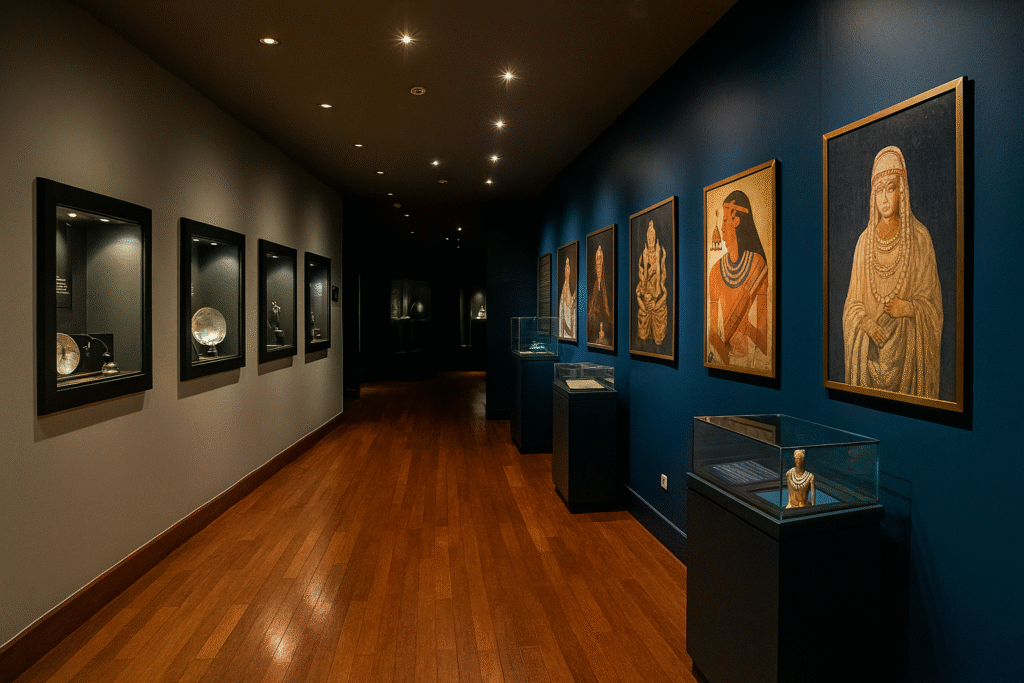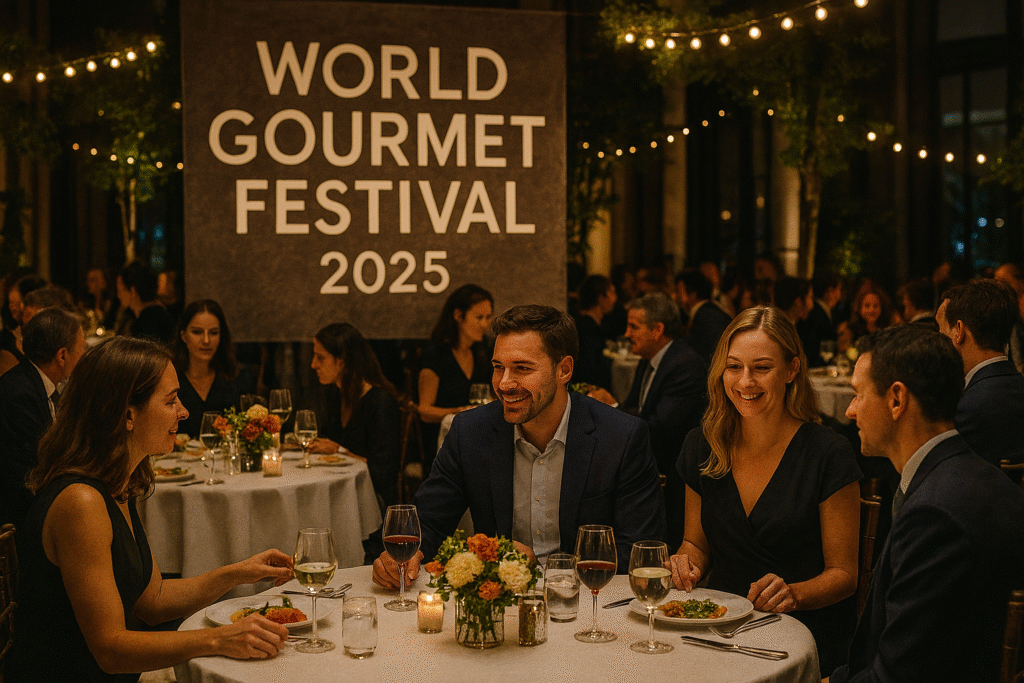The Robert Wan Pearl Museum in Tahiti is the only museum in the world dedicated solely to pearls. Located in Papeete, it actively immerses visitors in the fascinating story of these luminous gems, from myths and legends to modern pearl farming techniques.
Additionally, at this Tahitian pearl museum, you’ll explore how pearls shaped civilizations. Ancient Chinese records describe pearls as “tears of the moon,” while in Rome they symbolized wealth and status. Meanwhile, in Polynesia, pearls were considered gifts from the gods. Research shows that over 70% of early civilizations valued pearls as sacred or royal objects.
One of the main highlights is the world’s largest round Tahitian cultured pearl, a 26mm silver-grey gem weighing 8.7 grams, named the Robert WAN. Specifically, seeing this rare treasure helps visitors understand why Tahitian pearls are considered the “black gold” of the Pacific. As a result, visitors gain insight into both the craftsmanship and cultural significance behind these gems.
Furthermore, visitors learn the steps of pearl cultivation. For example, grafting demonstrations show how oysters produce pearls, while exhibits display the range of colors and shapes unique to Tahitian varieties. In addition, other displays highlight the history of pearl legends across cultures. Also, interactive sections guide visitors through the nuances of choosing the perfect pearl.
Exhibits at the Robert Wan Pearl Museum
- Pearl history across cultures: Asia, Rome, and Polynesia
- Pearl legends: Myths about divine origins and symbolism
- Tahitian pearl farming techniques: Step-by-step cultivation
- Largest pearl display: The 26mm Robert WAN
Moreover, learn more about Understanding Tahitian Pearls to complement your visit.
Why Visit the Robert Wan Museum in Tahiti?
- Only pearl museum in the world
- Perfect for travelers interested in Tahitian culture
- Combines history, craftsmanship, and art
- Offers a boutique with authentic cultured pearls
. Planning your Tahiti trip? Check the guide on Best Things to Do in Tahiti.
. Looking to buy pearls? Read the Pearl Buying Guide.
. Interested in other gems? Explore the History of Gemstones.
Additionally, visit the official Robert Wan website for more details on Tahitian pearl farming and artistry.
“Every pearl carries the story of the ocean and time itself.” – Robert Wan
FAQs About the Pearl Museum in Tahiti
Q: Where is the Robert Wan Pearl Museum located in Tahiti?
A: The museum sits in Papeete, the capital city of Tahiti, and guides visitors easily from the cruise port and downtown area.
Q: What makes this Tahitian pearl museum unique?
A: Experts recognize it as the only museum fully dedicated to pearls, with exhibits covering history, legends, and pearl farming.
Q: How long should I spend at the Robert Wan Museum?
A: Most visitors spend about 1–2 hours exploring the exhibits and boutique.
Q: Can I buy Tahitian pearls at the museum?
A: Yes, the museum boutique actively sells certified cultured Tahitian pearls.
Q: Is the museum family-friendly?
A: Yes, children enjoy the pearl farming displays and stories about pearls.
This comprehensive global cuisine FAQ covers everything about Asian and Western food and drinks. Whether you’re exploring international cooking techniques or discovering new flavors, this global cuisine FAQ answers the most frequently asked questions about world food traditions, ingredients, and culinary practices from both Eastern and Western cultures.
Global Cuisine FAQ: Asian & Western Food & Drinks
Food reveals cultural contrasts in clear and delicious ways. From cooking methods to dining customs, Asian and Western cuisines showcase unique traditions while also offering fascinating overlaps. Below, you’ll find answers to the most common questions about these culinary worlds.
Understanding Core Differences in Cuisine
1. What distinguishes Asian and Western culinary traditions?
Asian meals often rely on rice or noodles as a foundation. Flavors usually come from soy sauce, ginger, garlic, and a wide variety of spices. Meanwhile, Western gastronomy emphasizes bread, potatoes, and pasta. Dairy plays a key role, with butter, cream, and cheese giving richness to many dishes. Herbs such as rosemary and thyme highlight European cooking. These contrasts create distinct dining habits and flavor profiles.
2. Are Asian dishes always spicy?
No, not at all. While cuisines from Thailand and parts of India feature bold use of chilies, not every dish follows this pattern. Japanese sushi, Chinese dim sum, and Korean bulgogi are mild examples. In fact, Asian cuisines range from fiery to delicate, showcasing a rich palette of flavor.
Western Breakfast Staples and Comfort Foods
1. What constitutes typical Western morning meals?
Western breakfasts often include eggs, bacon, and toast. Pancakes, waffles, and cereal are also popular choices. These hearty starts are usually enjoyed with coffee, tea, or juice, providing both energy and comfort.
2. What represents popular Western comfort foods?
Comfort foods in the West speak to nostalgia and indulgence. Creamy macaroni and cheese, pizza, and hearty casseroles are favorites. Similarly, burgers and fried chicken have wide appeal. Because they are warm, filling, and familiar, these dishes strongly connect to emotion.
Cultural Dining Practices
1. Do all Asian cultures employ chopsticks?
No. Chopsticks dominate in East Asia—China, Japan, and Korea. However, Southeast Asia prefers spoons and forks, while India and parts of the Middle East often use flatbreads or hands. This diversity highlights how food customs closely reflect culture.
2. Why are some Asian foods fermented?
Fermentation preserves food while also enhancing nutrition and flavor. Korean kimchi, Japanese miso, and Indonesian tempeh show how tradition meets health benefits. These foods are valued not only for taste but also for their role in well-being.
Common Western Beverages
1. What beverages are common with Western meals?
Western dining often features water, soda, or fresh juice. Alcohol also has a strong cultural connection, with wine served at European dinners and beer central in North America. In the southern United States, sweet iced tea is a staple.
Dietary Flexibility and Options
1. Can one discover plant-based options easily?
Yes. Asian cuisines offer tofu stir-fries, lentil dals, and vegetable curries that are naturally vegetarian. Western food, similarly, embraces plant-based eating. Salads, vegetarian pastas, and vegan burgers have grown popular, making meat-free dining accessible worldwide.
Unique Asian Drinks to Explore
1. What are some unique Asian beverages?
Asia provides a wide variety of distinctive drinks. Bubble tea, from Taiwan, combines tea with chewy tapioca pearls. Japanese sake, made from rice, holds deep cultural meaning. Strong Vietnamese iced coffee, sweetened with condensed milk, adds a bold twist compared to Western brews.
Portion Sizes and Dining Habits
1. How do portion sizes compare?
Western meals often emphasize large servings, reflecting abundance. By contrast, Asian meals are usually smaller yet balanced, encouraging sharing and mindful eating. This creates different social experiences around the table.
The Art of Fusion Cuisine
1. Is it feasible to integrate Asian and Western flavors?
Absolutely. Fusion cuisine blends traditions in creative ways. For instance, teriyaki burgers combine Japanese flavors with American fast food, while kimchi tacos bring Korean spice to Mexican street food. These playful mixes show how food bridges cultures.



